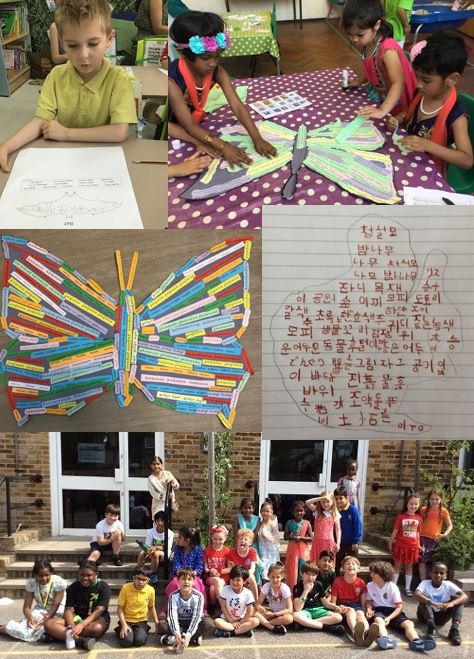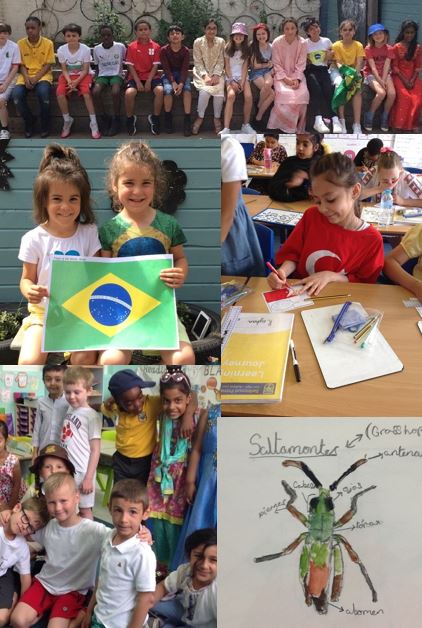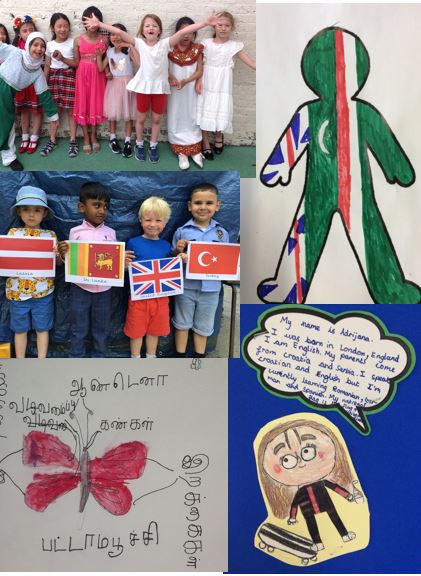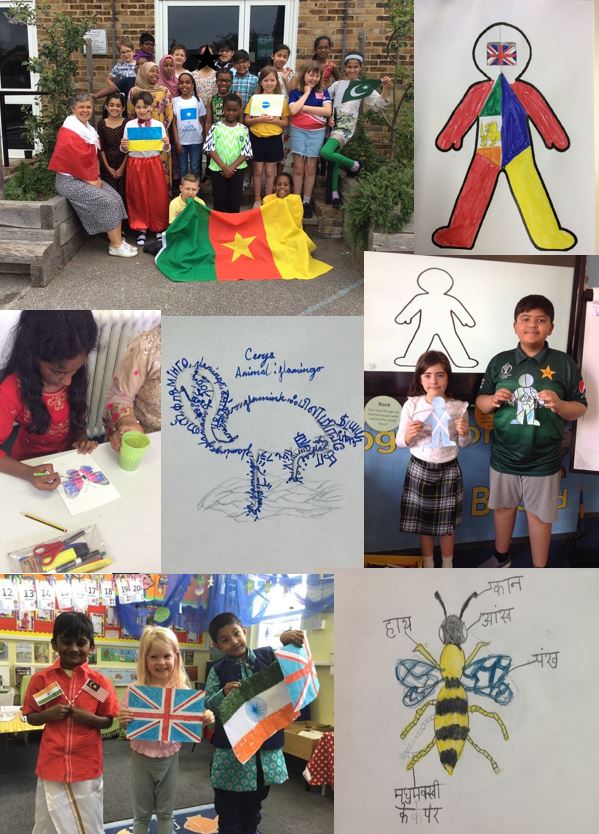Sellincourt Primary School is located in London and its student population reflects the incredible diversity without our capital city. We know that acknowledging and incorporating pupils’ home languages into their formal learning has positive effects not just on language development and learning in general, but also on important aspects of well-being such as integration and belonging. We were delighted to see how Sellincourt Primary utilised Lost Wor(l)ds activities to celebrate the diversity amongst their pupils. The school dedicated an entire day in June, to celebrating the connection between language, cultural identity and nature with ‘International Languages Day’.

The children had a fabulous day packed with fun activities, which began when they arrived at school looking fantastic in traditional outfits and clothes representing the colours of their national flags – thanks to the wonderful efforts of their families and carers: “We are from Brazil! My t-shirt has a flag of Brazil” (Isabella & Emilia, age 3).

A wide range of Lost Wor(l)ds’ activities promoted Sellincourt’s rich heritage and allowed children to showcase their multilingual talents. Children sang nursery rhymes in other languages, demonstrated by Abeena (age 4) who sang ‘Incey Wincy Spider’ in Tamil – if you’re looking for activities that incorporate singing and multilingualism try the Old MacDonald or Happy Bug Ball activities. Art, poetry and nature were combined to produce Calligrams and Drashti’s favourite (age 6): “I liked drawing Minibeasts and writing their names in lots of other languages. I feel proud that I learnt to write butterfly in Japanese. It was my first time and I liked it“.

The children were particularly proud of the Language Portraits they produced – an activity that encouraged children to talk about their different languages and how they form part of their identity: “I am proud of the language portrait because it’s all about me’’ Rithika (age 8).
Children across the different year groups made the connection between language, culture and identity, as well as enjoying making comparisons between different languages:
“I love these kind of days because I can share the language that I speak at home and learn about other people’s language” Manahil (age 8)
‘’I learnt that in some languages the word sounds the same’’Elizabeth (age 9)
“It is important to learn about people, cultures and languages because it helps us to view and understand the world” Leo (age 9)
‘’I think it is important to share our different languages because they share our ideas and show that we’re all unique.’’ Adrijana (age 11)
The teachers were also delighted to see how the children responded: “The children became the experts. They really enjoyed teaching me how to pronounce words in their language. We laughed a lot!”. This included seeing how the activities connected with all the children: “Even the quietest children were enthused to participate and spoke about their home language animatedly.’

Over the course of the day, children produced some wonderful artwork and poetry in their home languages and in English. It was a day where everyone participated whether they were monolingual or multilingual. Next year the school hopes to invite parents to join in celebrating the diversity of cultural identity and languages spoken within the Sellincourt school community.
Could you be one of our feature schools? Do get in touch with us!